SIZE In length, the adrenal gland is 3-5 cm long; its transverse dimension is 1-2 cm and its antero-posterior is 4-6 mm. The gland weighs in at 8 gm and has a volume measuring ___. Each glands is 3-5 cm long, 1-2 cm wide, and 4-6 mm thick. Together, the two weight about 8 gm, though their weight and size vary with age and physiologic condition.
The adrenals can vary in weight anywhere between 4 to 14 grams, but the average weight is between 3 to 6 grams. Only about 10% of the gland’s weight is from the medulla (inner portion).The average adrenal dimensions are:
· 20-30 mm. in width
· 40-60 mm. in length
· 3-6 mm. in thickness
The left adrenal is slightly larger than the right.
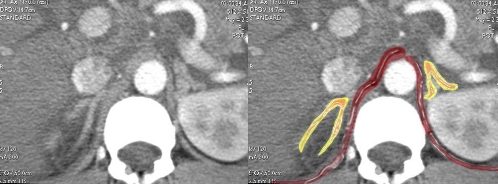
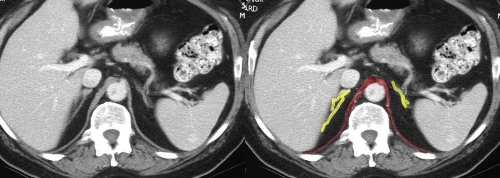
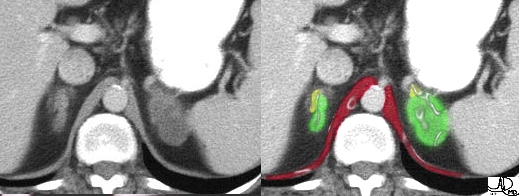
Anatomy and Physiology of the Adrenal Glands: Size – small and large

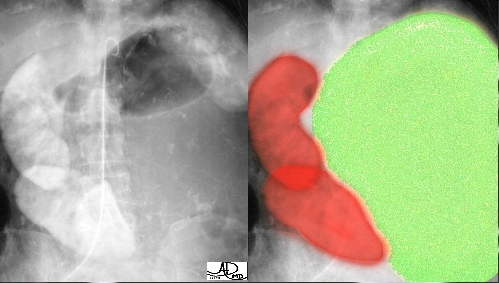
Other Nodules and Masses
Abnormal Gland
Adrenal gland abnormality can vary from subtle thickening of the limbs as seen in hyperplasia, to small subcentimeter adenomatous nodules, to multiple tiny nodules of hyperplasia, to 6cm. (or more) masses. Attention to detail and imaging technique is key to the diagnosis of the abnormal gland.
Masses can be classified according to their size.
Conditions producing small masses less than 4 cm. include:
adenoma
hyperplasia
metastasis
pheochromocytomas
Conditions with larger masses greater than 4 cm. include:
cysts
hematomas
metastasis (especially from breast and lung cancers)
myelolipomas
pheochromocytomas belonging to the MEN syndrome
When a mass is greater than 6cm., the most likely diagnosis is a primary carcinoma.
Anatomy and Physiology of the Adrenal Glands: Incidentaloma
An “incidentaloma” is the most common adrenal tumor. It represents a small benign adenoma, (“oma” = tumor) of no functional significance, which is found incidentally, and hence its name. A nodule that is less than 3cm. with a density of less than 10 HU on CT, is diagnostic of the “incidentaloma”. The characteristic finding on MRI is a darkening in the “out of phase” T1 sequence of the tumor .
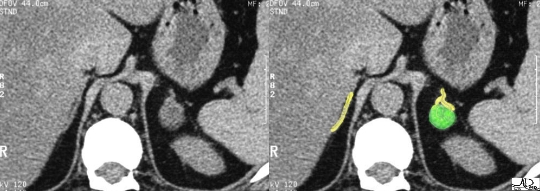
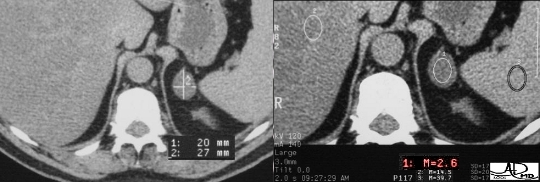
Anatomy and Physiology of the Adrenal Glands: Bilateral Adrenal Masses
In a patient with a known malignancy, particularly in lung or breast carcinomas, the finding of bilateral adrenal masses most likely represents metastatic disease. However, documenting the entity of metastatic adrenal disease is sometimes a decision focus for the type of treatment a patient may receive. In these circumstances, an adrenal biopsy must be performed .
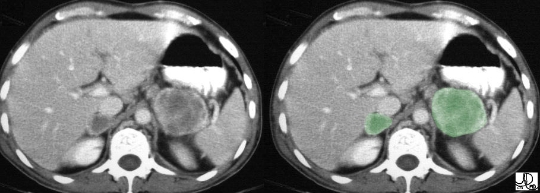
The finding of bilateral masses (green overlay), in a patient with a known malignancy most likely represents metastatic disease. This patient has known lung carcinoma and bilateral masses with peripheral enhancement, which almost certainly represents metastatic disease.Courtesy of: Ashley Davidoff, M.D.
The most common causes of bilateral adrenal enlargement include:
metastases (especially lung and breast)
bilateral adenomas,
hemorrhage; spontaneous,: (particularly in infants),
traumatic, and bleeding disorders.
Less common causes include:
· histoplasmosis and tuberculosis
· neuroblastoma
· pheochromocytoma
Additionally, rare causes include:
· Addison’s disease
· amyloidosis
· lymphoma

This is a rare case of bilateral adrenal enlargement in a patient with end stage lymphoma.Courtesy of: Ashley Davidoff, M.D.
Cyst in the Adrenal
Cysts in the adrenal are not uncommon and they may be quite large. Adrenal cysts are fluid containing structures enclosed by a thin smooth wall. In general, adrenal cysts have no functional or clinical significance. MRI is the best method of confirming their make up and morphology.
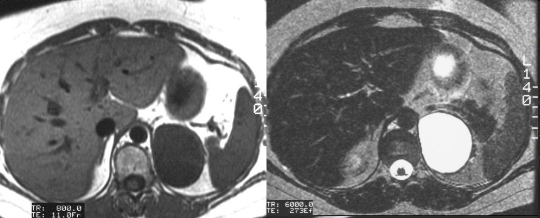
Size and Shape

Each limb is about the width of the crus of the diaphragm.
The inner medulla is colored in red and the outer cortex in yellow.
Ashley Davidoff MD 2018
adrenals-0002

In general the adrenal glands are triangular in shape and are reminiscent of the shape of the ?wishbone? or the breast bone of the chicken.
Courtesy of: Ashley Davidoff, M.D.
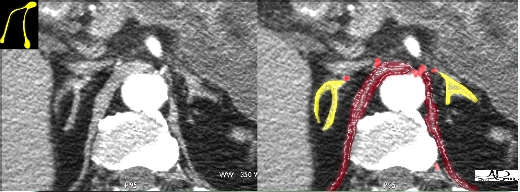
The right adrenal gland, in this case, looks exactly like the inserted drawing of the ?wishbone?. This represents the typical appearance of the glands ? the right long and thin, and the left short and stout. The bright red overlays represent some of the branches of the adrenal arteries.Courtesy of: Ashley Davidoff, M.D.
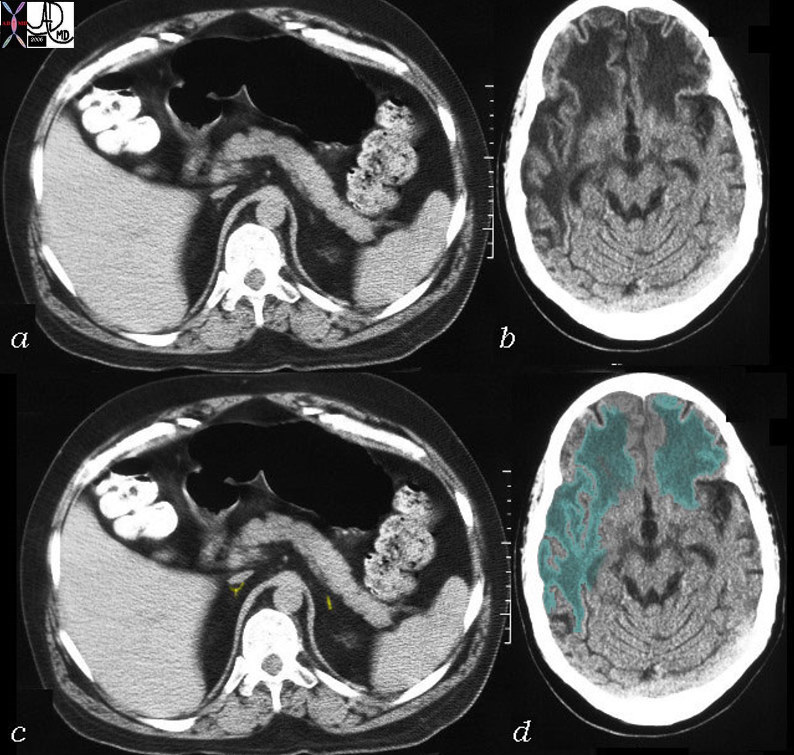
31464c04 26 male adrenal brain white matter dx adrenal leukodystrophy inherited
Davidoff MD Courtesy Rebecca Schwartz
TheCommonvein.net
